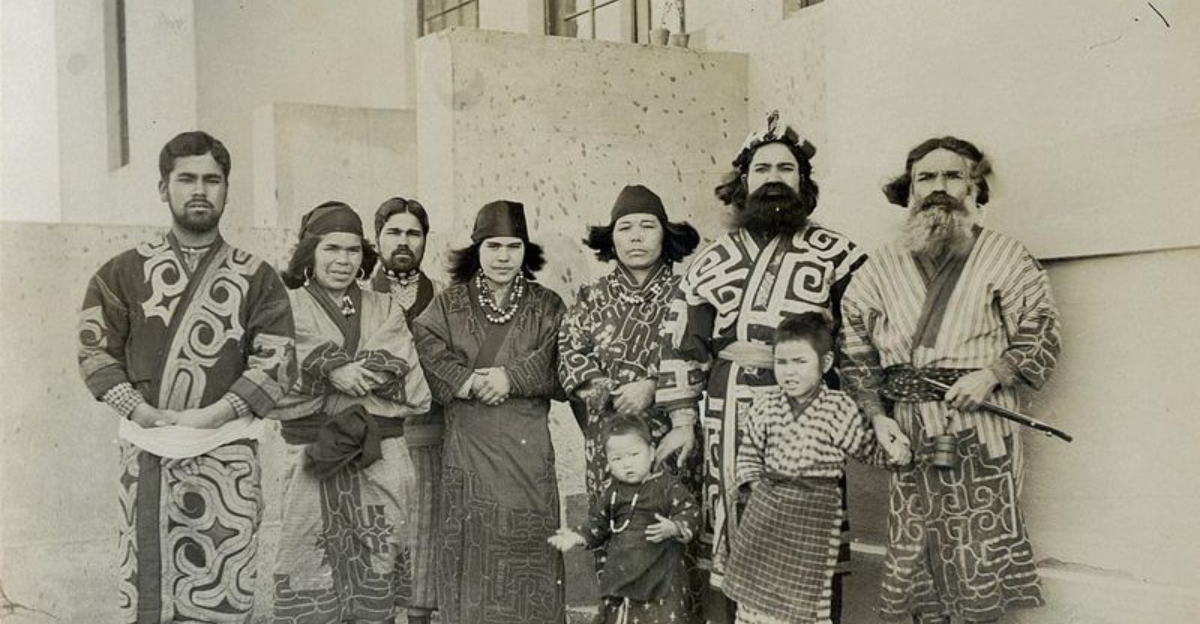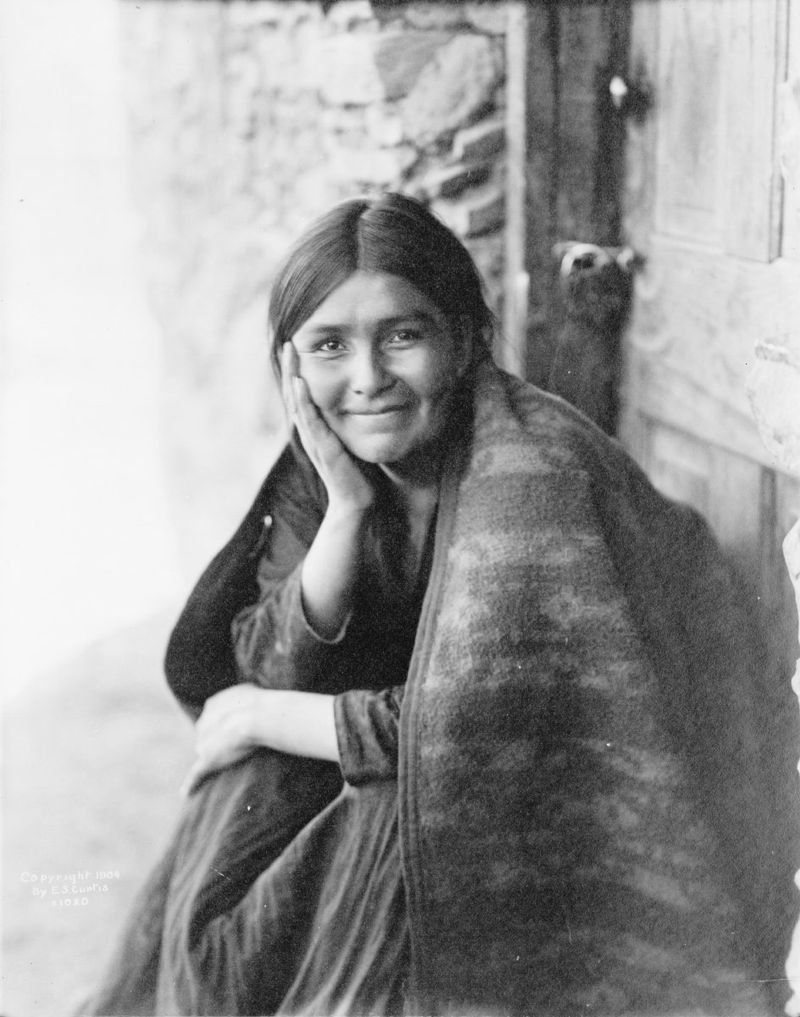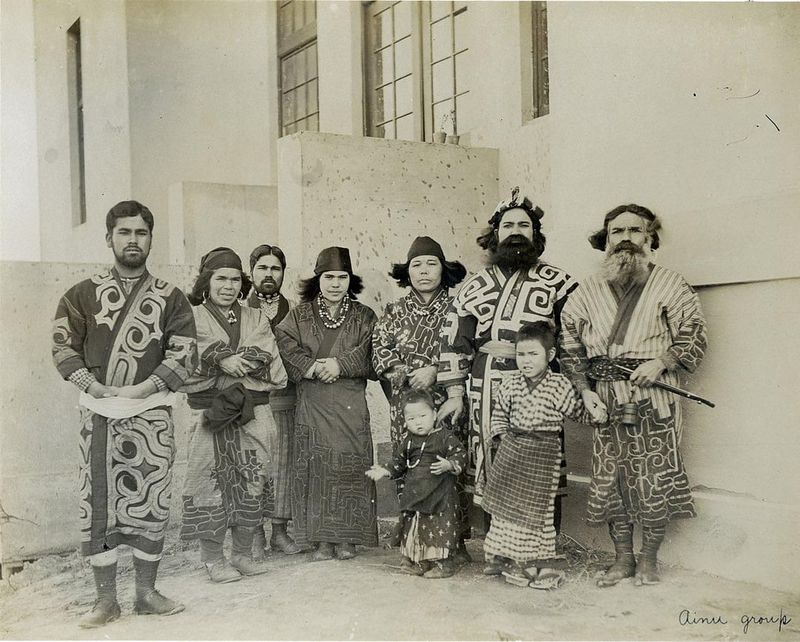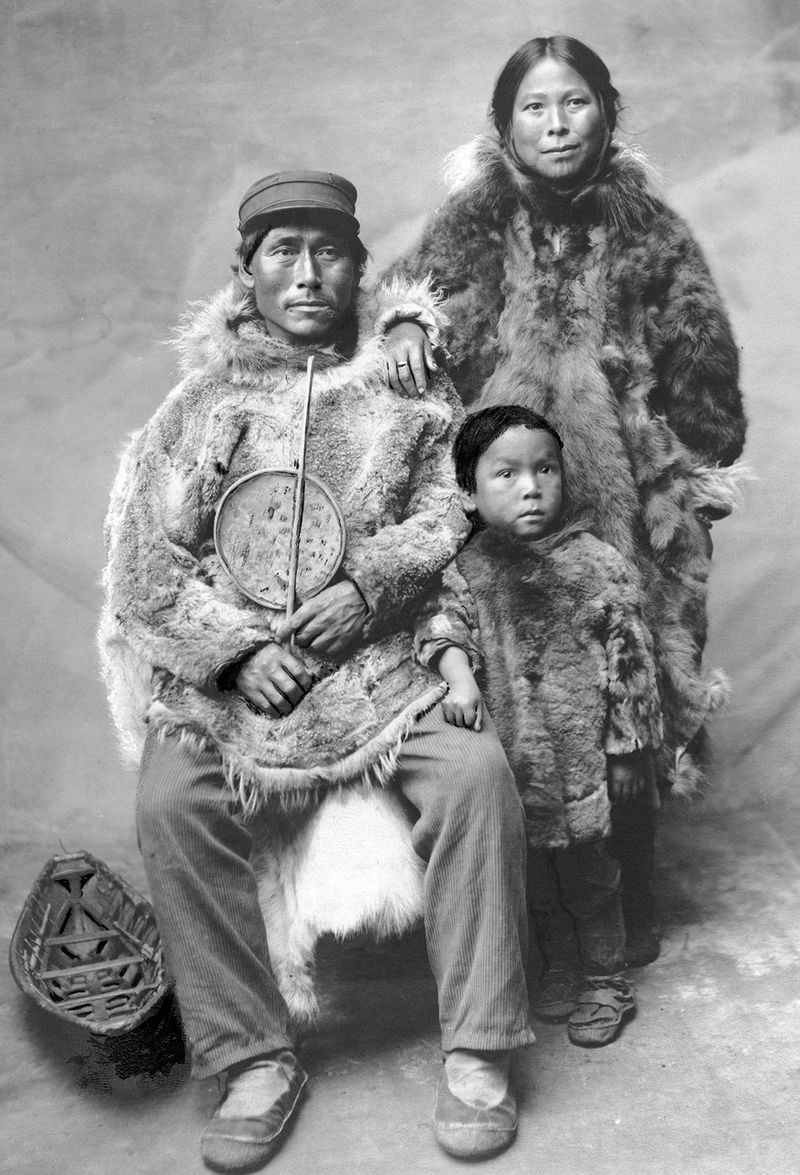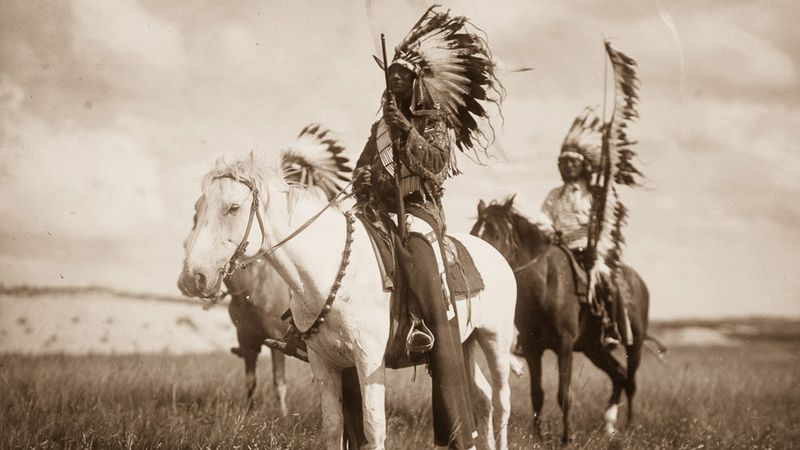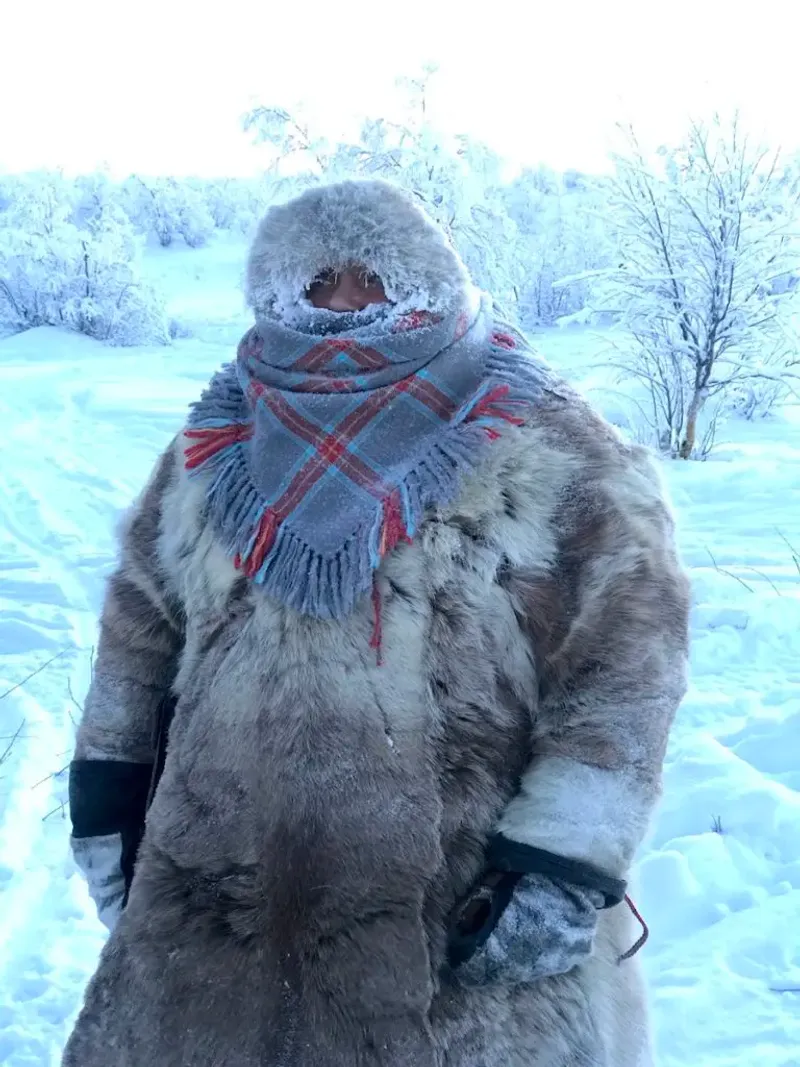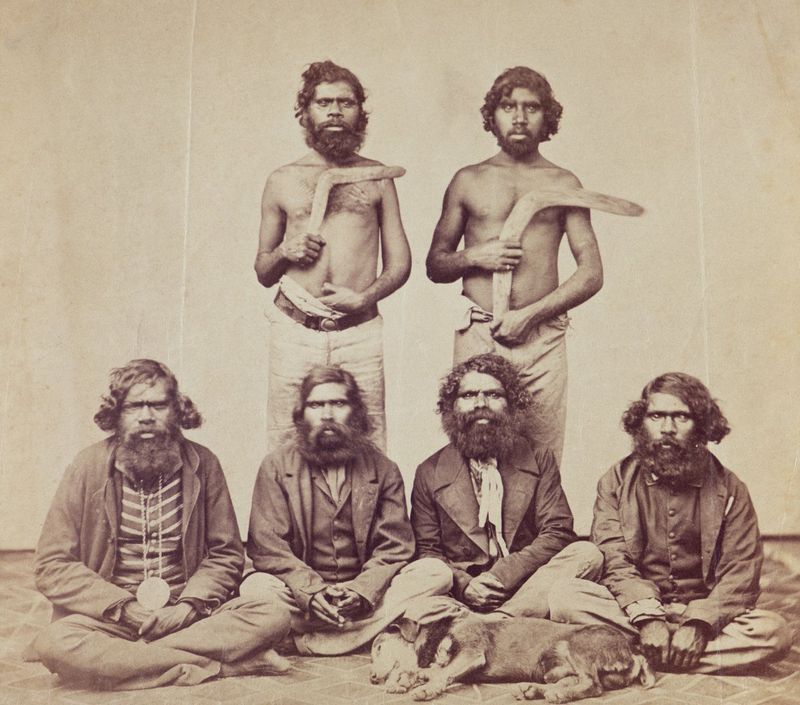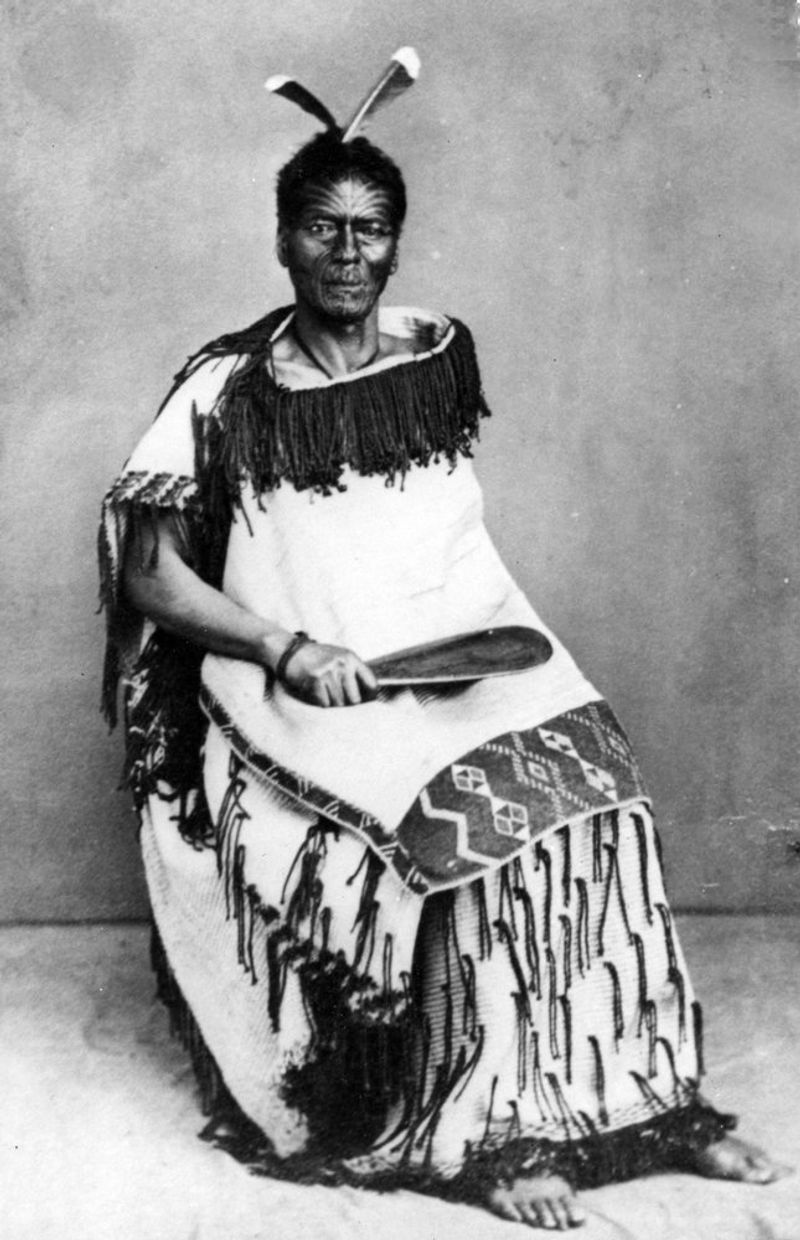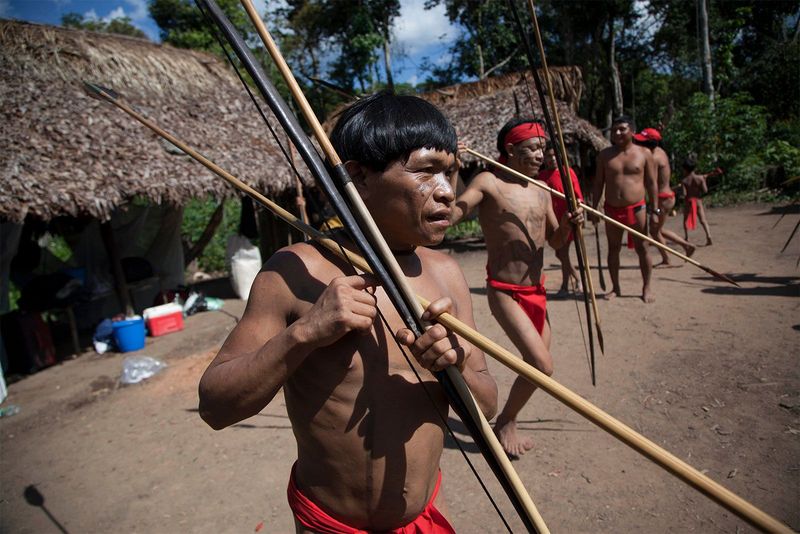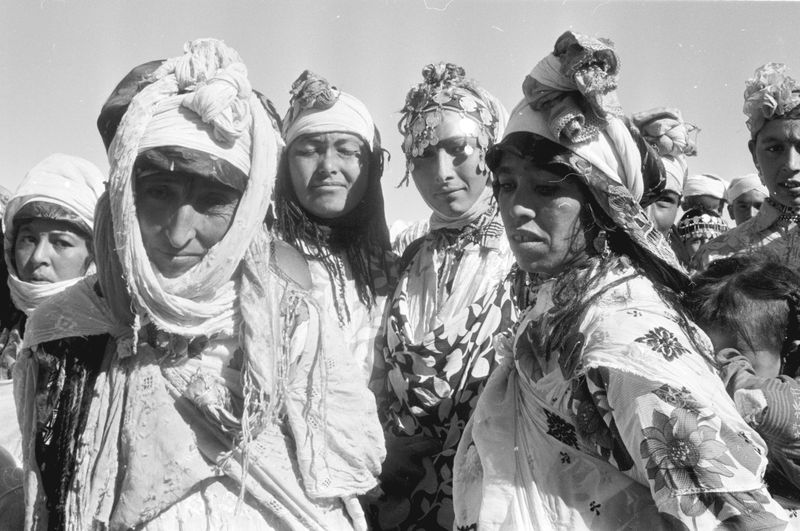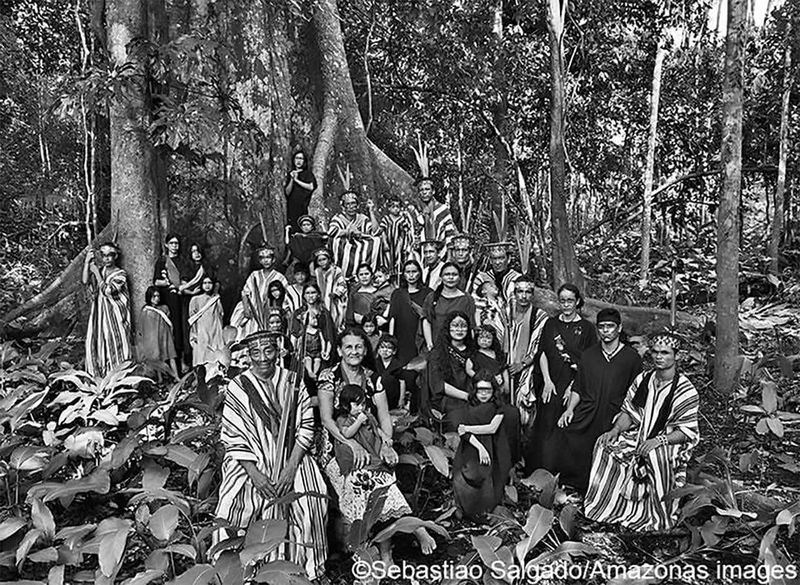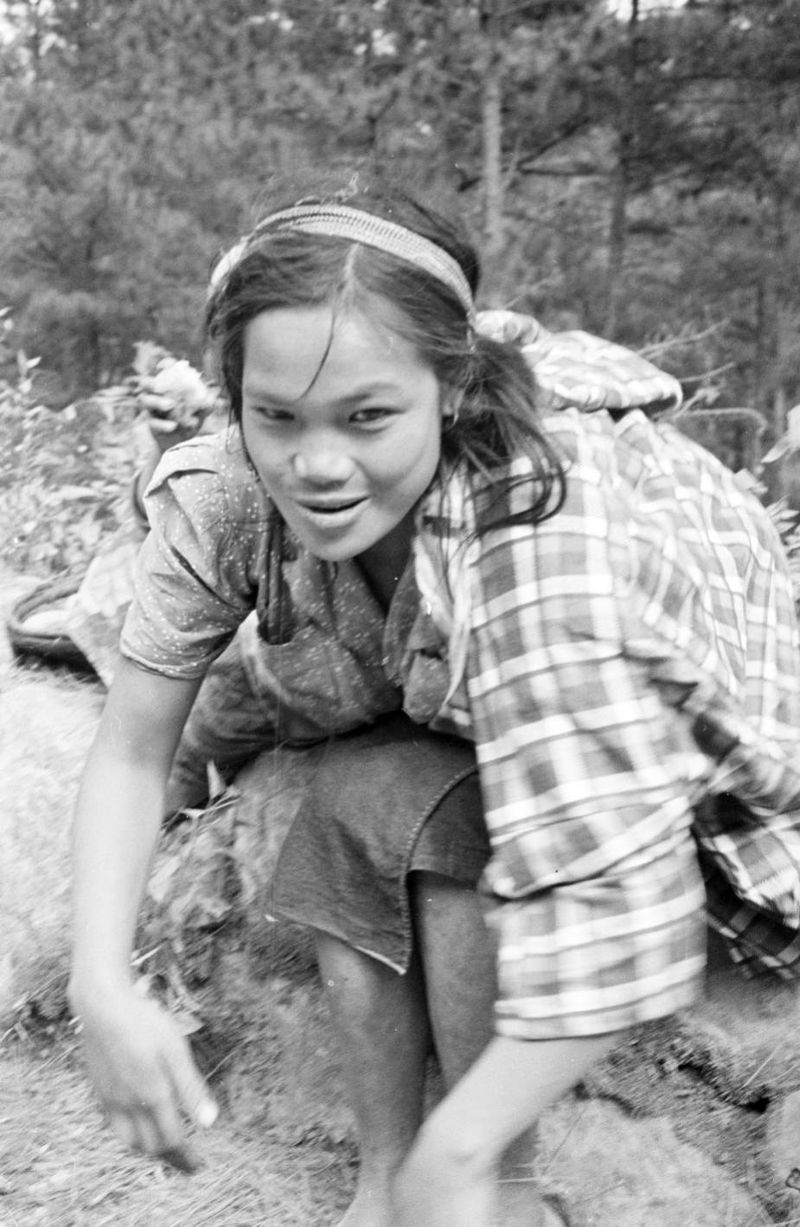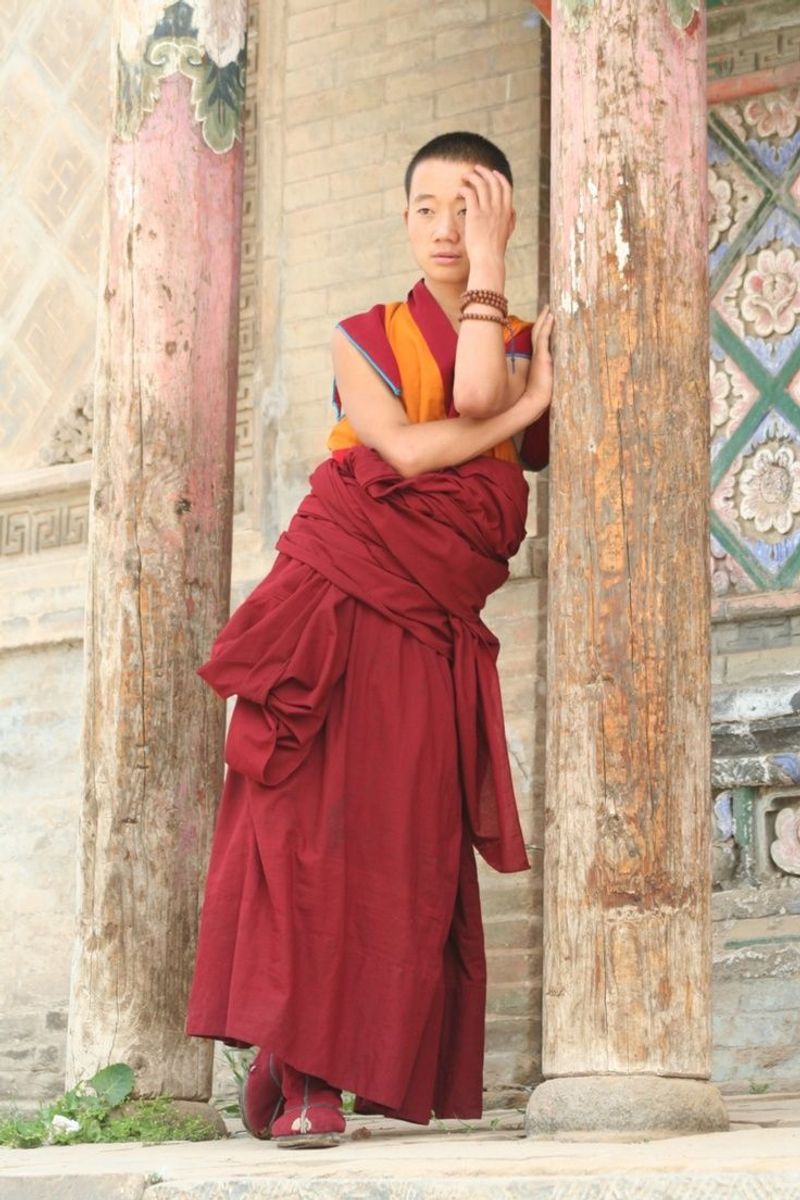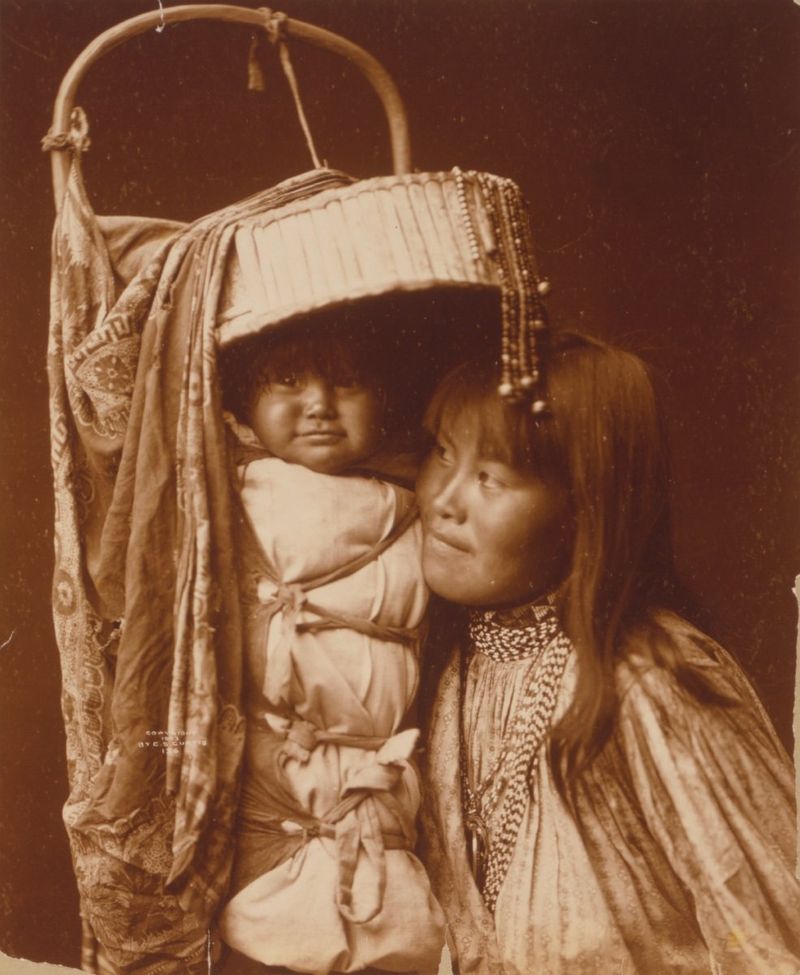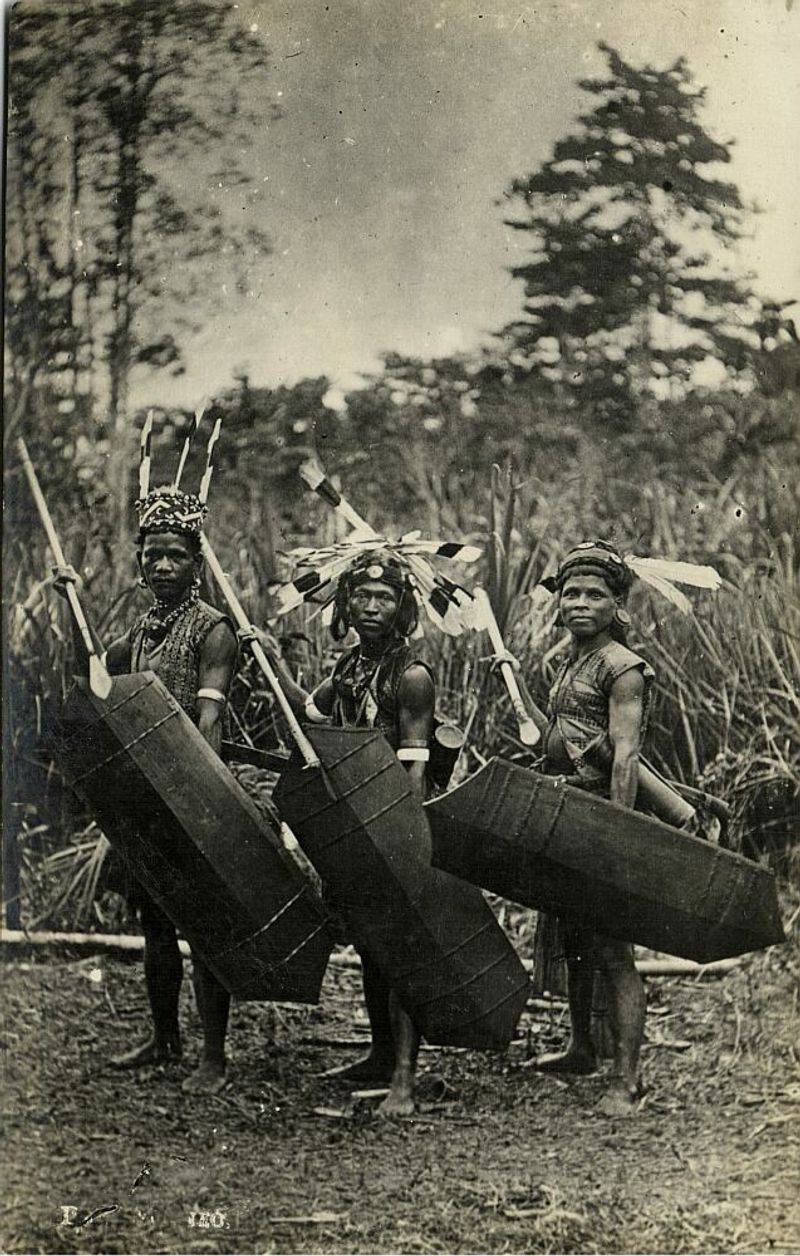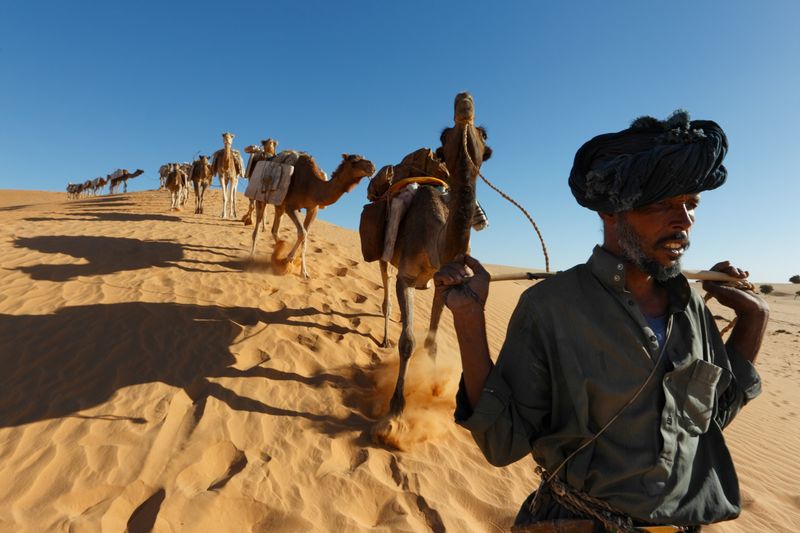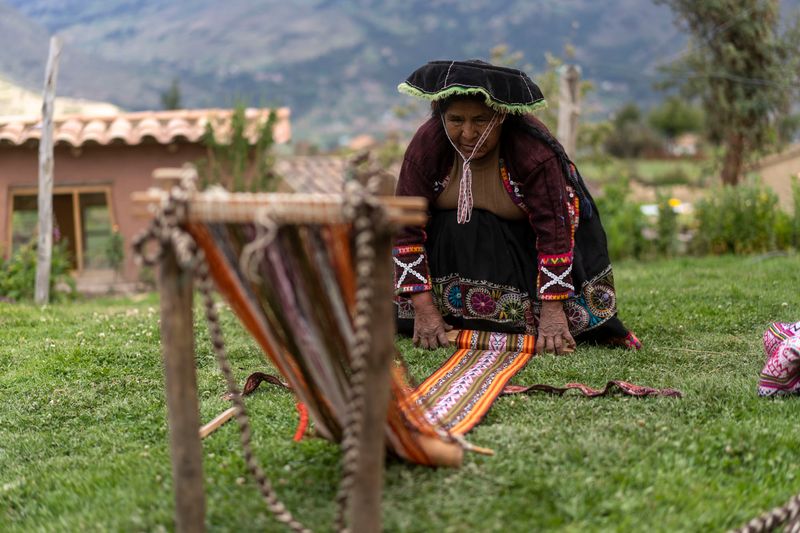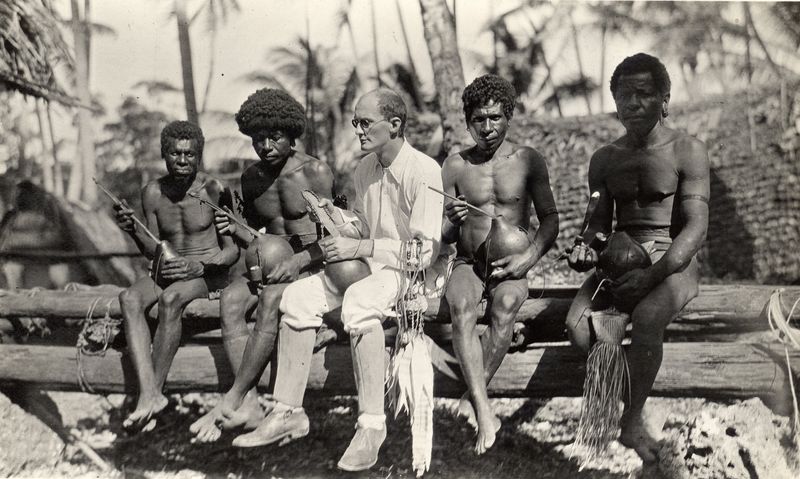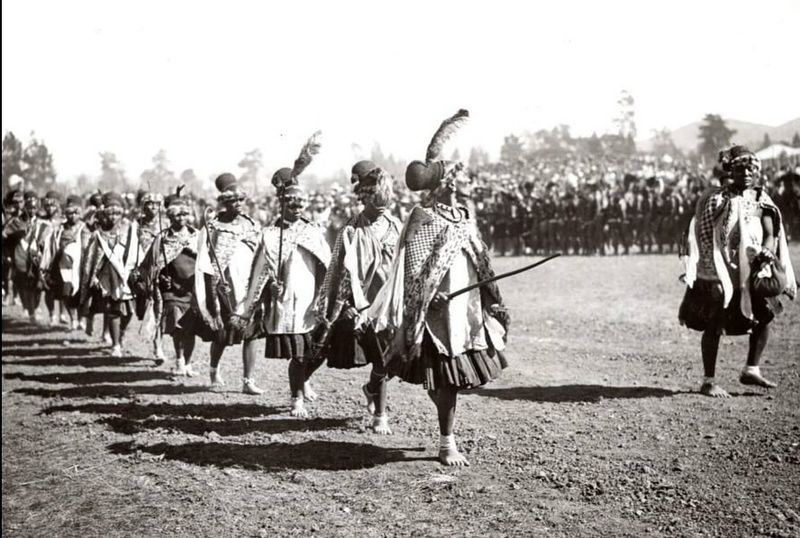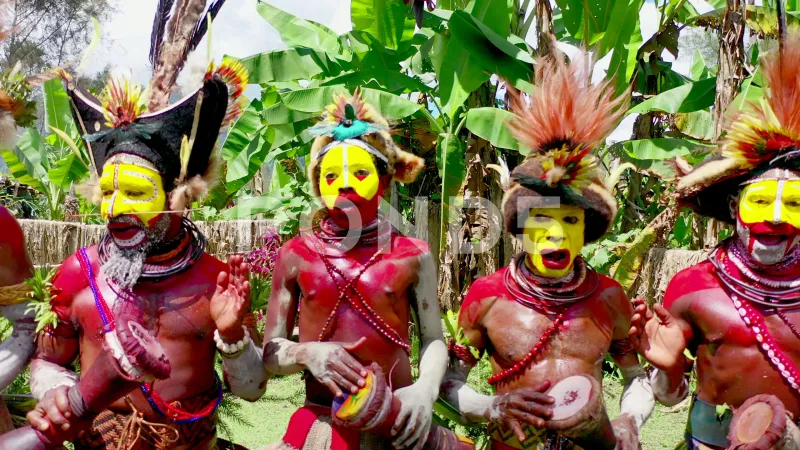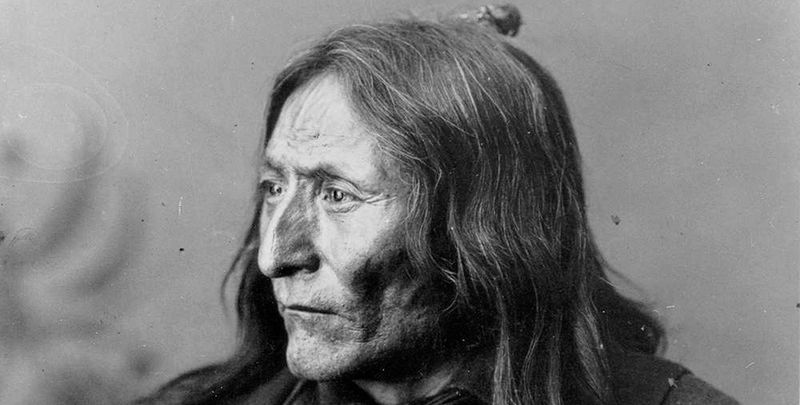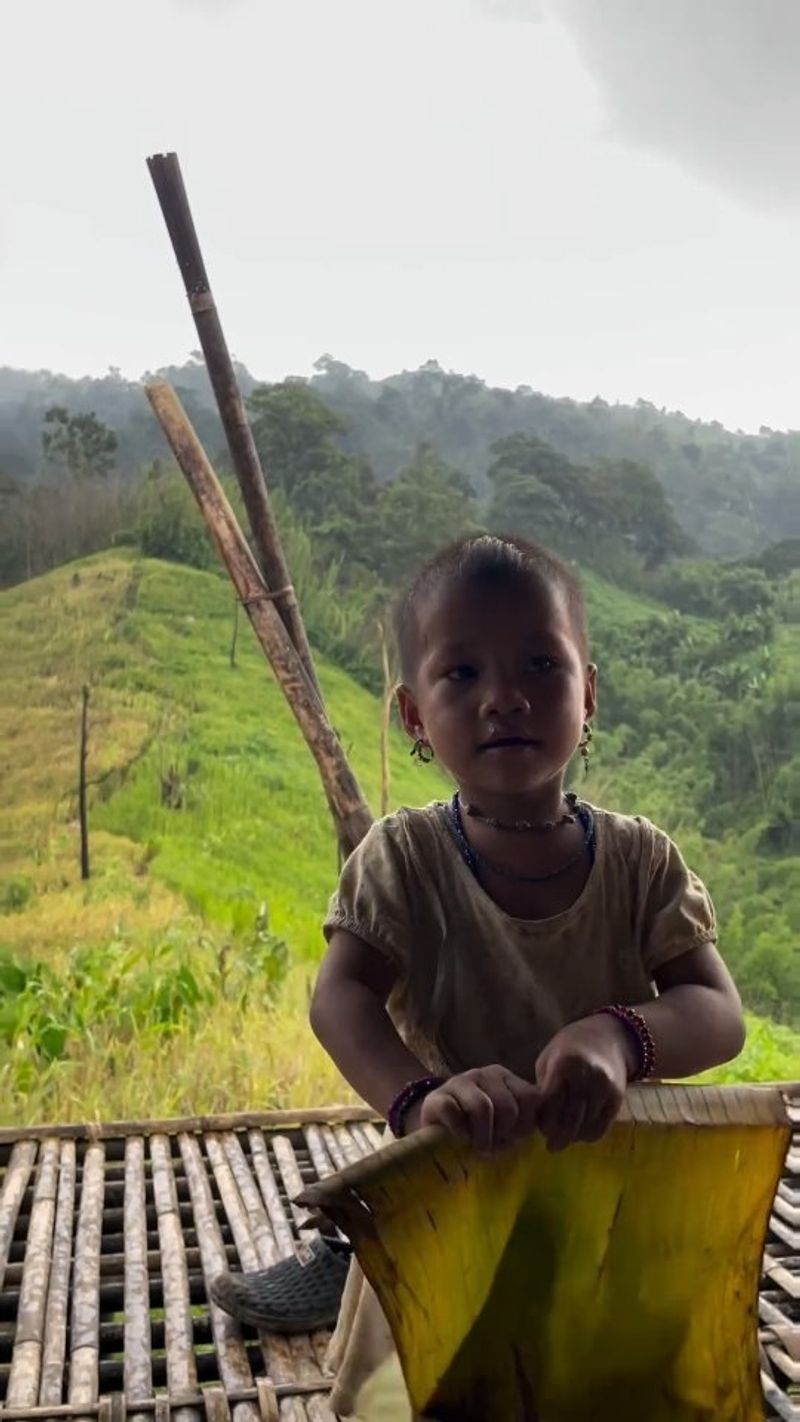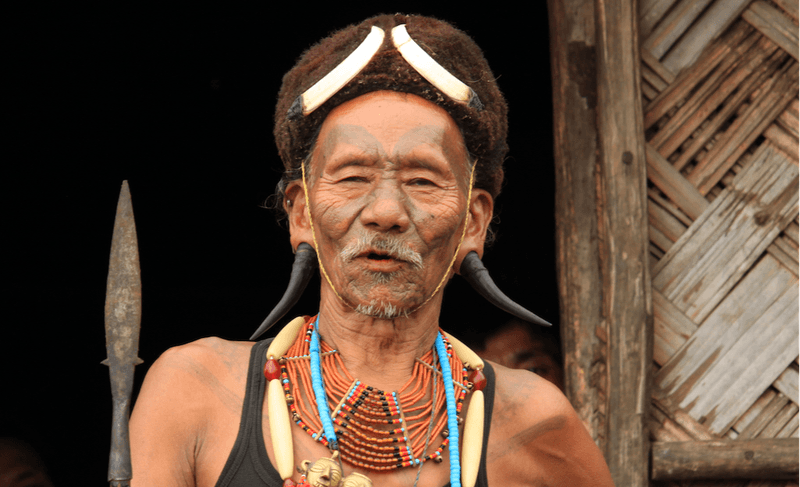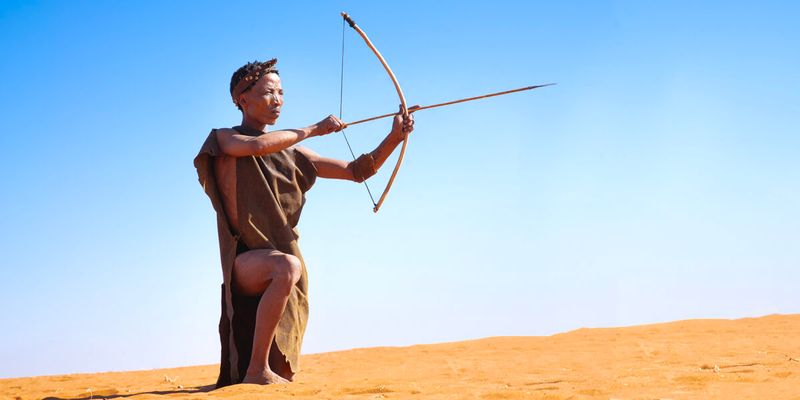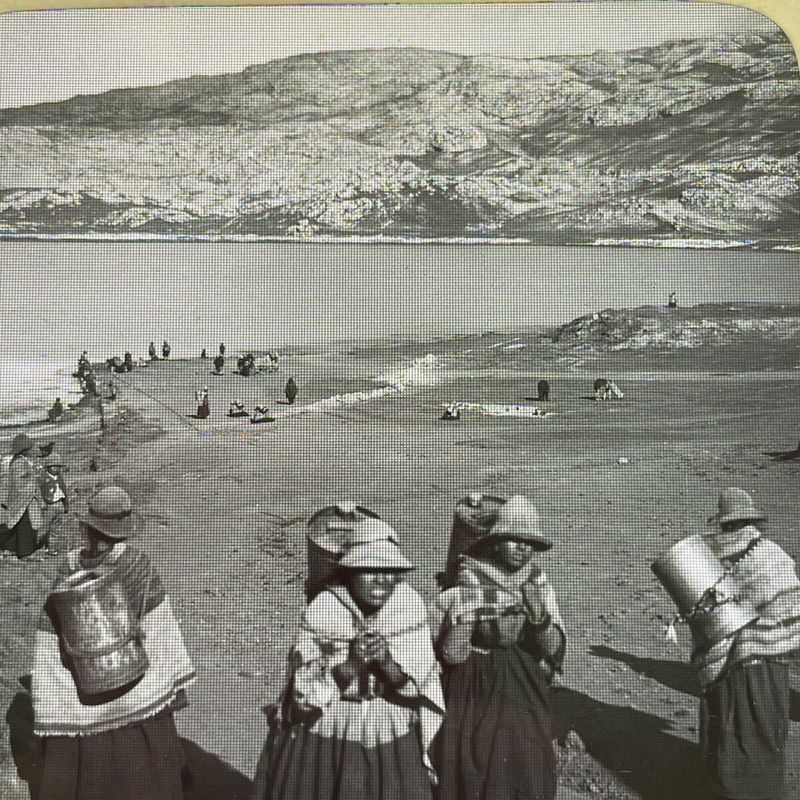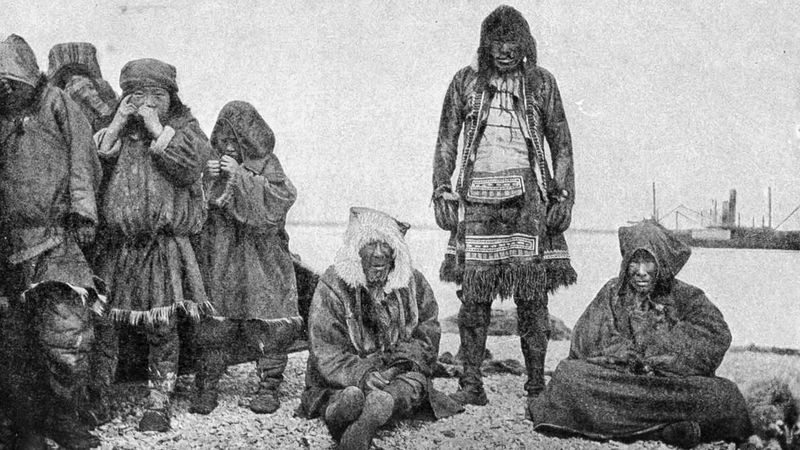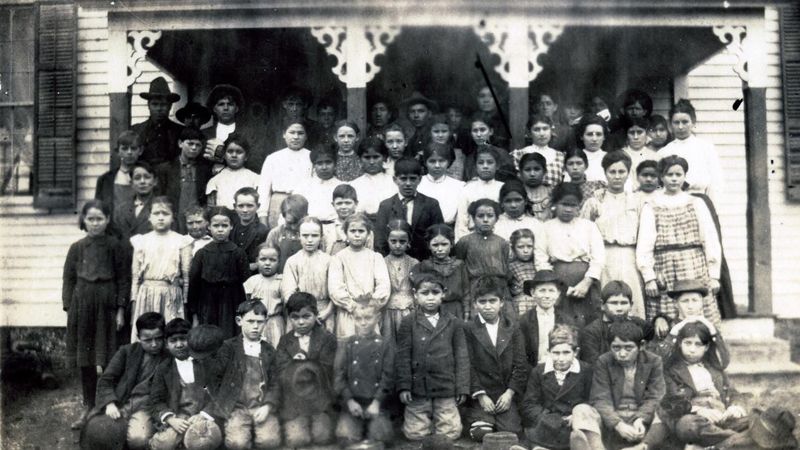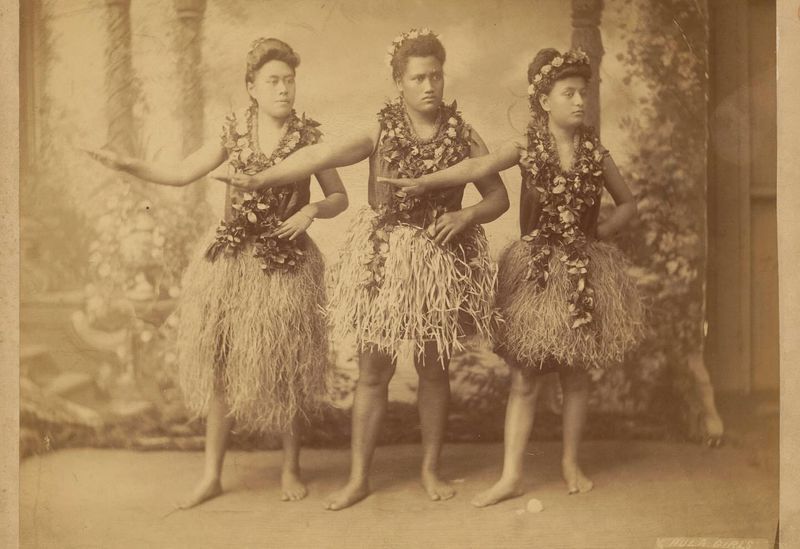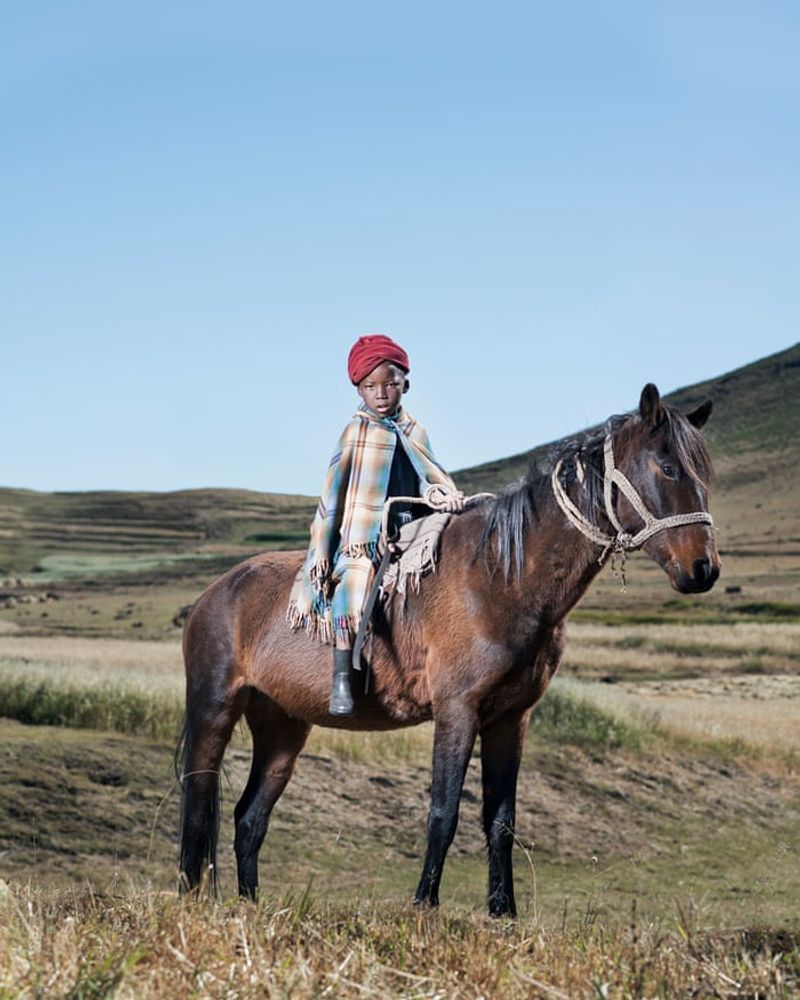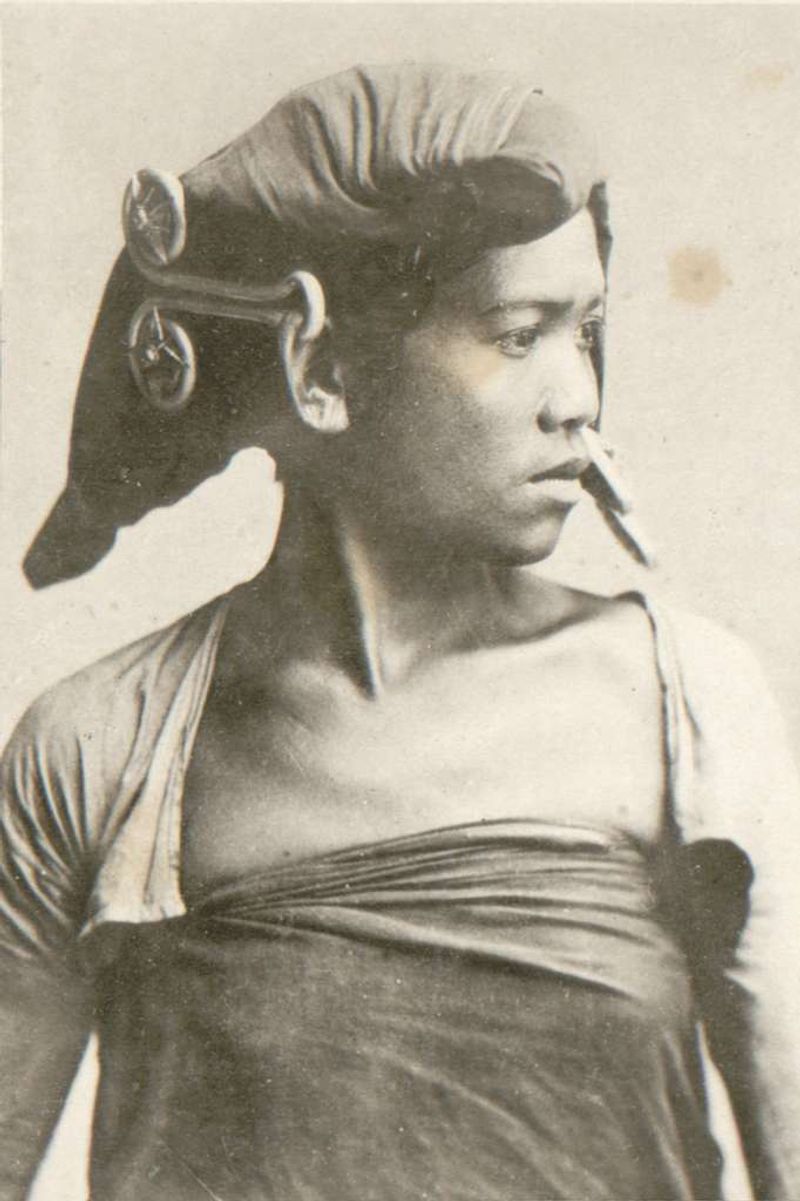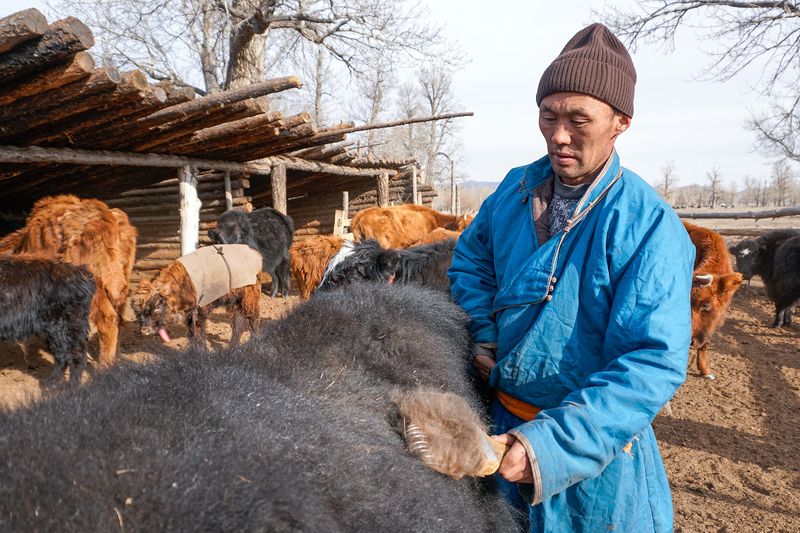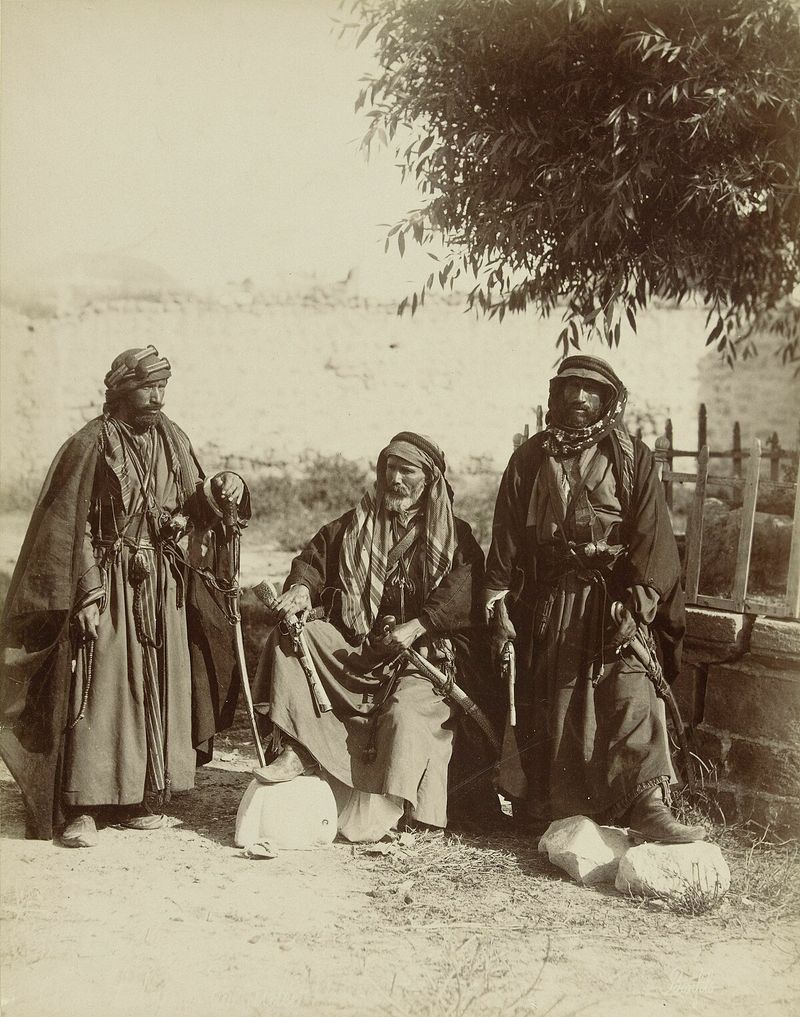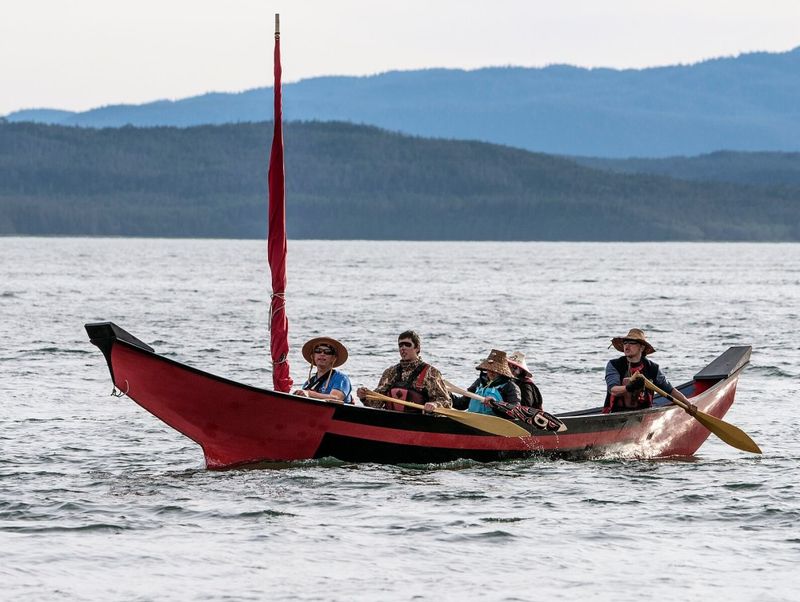Explore a captivating journey through time with 34 historic photographs showcasing the diverse cultures and traditions of native peoples from around the world.
This collection offers a glimpse into the lives and environments of various indigenous groups, capturing their unique customs, attire, and daily activities.
Each photograph serves as a window into a distinct cultural heritage, preserving moments that continue to inspire and educate.
From the deserts of Arizona to the frozen plains of Siberia, these images celebrate the rich tapestry of humanity in all its authentic diversity.
1. Navajo Girl, Arizona, USA
In the early 20th century, a young Navajo girl stands serenely against the vast desert backdrop of Arizona. Wrapped in intricately woven wool garments, her gaze reflects a quiet wisdom beyond her years.
This image captures the essence of resilience and cultural pride, emblematic of the Navajo people. The warm hues of the desert landscape serve as a perfect counterpoint to the subtle patterns of her attire, telling a story of identity and heritage.
A glimpse into her world offers insight into the enduring legacy of the Navajo, deeply rooted in tradition and land.
2. Ainu Elder, Hokkaido, Japan
An elder of Japan’s Indigenous Ainu people stands with dignified grace in Hokkaido, circa 1910. Dressed in richly embroidered robes, he clutches a ceremonial staff that signifies his status and wisdom.
The intricate patterns of his attire speak volumes about the cultural heritage and artistry of the Ainu. His serene expression mirrors a life deeply connected to tradition and spirituality.
This photograph serves as a testament to the Ainu’s enduring cultural legacy, offering a rare glimpse into a community known for its distinct language, beliefs, and customs—integral parts of Japan’s diverse history.
3. Inuit Family, Northern Canada
In the icy expanses of Northern Canada, a family of Inuit stands resilient against the harsh Arctic winds. Bundled in furs, their shy smiles convey warmth that defies the cold.
This early 20th-century photograph showcases a family whose lives are intricately woven with the rhythms of nature and survival in one of the world’s harshest climates.
Generations of knowledge are encapsulated in their attire and expressions, reflecting a way of life that has adapted to the frozen beauty around them. This image is a testament to their enduring spirit and cultural richness.
4. Lakota Sioux Warriors, South Dakota, USA
In a powerful display of heritage and resistance, Lakota Sioux warriors sit astride their horses on the vast plains of South Dakota. Their full regalia is a vivid tapestry of feathers, beads, and leather, symbolizing both personal and tribal identity.
The strength of these warriors is mirrored in their proud expressions and the spirited eyes of their mounts. The photograph captures a moment of defiance and dignity amidst changing times.
It stands as a poignant reminder of the Lakota’s unwavering spirit and the deep-rooted connection between the land and its people.
5. Sami Reindeer Herders, Scandinavia
Amidst the snowy tundra of Scandinavia, Sami reindeer herders are captured in a moment of daily life. Dressed in traditional clothing, they maneuver sleds pulled by steadfast reindeer, a scene as timeless as the landscape itself.
The photograph, from 1915, offers a glimpse into the nomadic lifestyle of the Sami, whose existence is intricately tied to the reindeer herds they manage.
Every stitch of their attire and every gesture speaks to a deep-seated cultural identity, maintained through the ages despite the encroachment of modernity. This image celebrates their enduring traditions.
6. Aboriginal Family, Australia
Seated around a fire in the heart of the Australian bush, an Aboriginal family offers a glimpse into a world rich with tradition and connection to the land. The tools scattered around them are as much a part of their identity as the intricate designs painted on their skin.
This circa 1900 photograph captures an intimate moment, where simple gestures tell stories of survival, art, and community.
The family’s presence is a poignant reminder of the deep ties that bind them to their ancestral land, a relationship that is both sacred and enduring.
7. Maori Chiefs, New Zealand
Draped in cloaks woven from flax and adorned with feathers, Maori chiefs of New Zealand stand with dignified pride in a formal studio setting, circa 1878. Each cloak, a masterpiece of craftsmanship, embodies the mana and status of its wearer.
Their expressions are solemn, yet convey a deep-seated connection to their cultural heritage and leadership roles.
This photograph serves as a powerful testament to the Maori’s resilience and adaptation through time, reflecting a heritage that continues to inspire and influence modern New Zealand society. It’s a snapshot of strength and legacy.
8. Yanomami Hunters, Amazon Rainforest, Brazil
Amidst the lush foliage of the Amazon Rainforest, Yanomami hunters prepare for their daily pursuits. Adorned with vibrant face paint and armed with handmade bows, they gaze intently towards the forest canopy.
This photograph from the 1930s captures the essence of a people whose lives are intricately connected to the rainforest. Their knowledge of the land is profound, rooted in centuries of tradition and survival.
The scene is both tranquil and intense, embodying the delicate balance between human life and nature’s vast kingdom. It’s a tribute to their enduring spirit and cultural heritage.
9. Polynesian Women, Tahiti
Beneath the warm sun of Tahiti, Polynesian women gather to weave mats from pandanus leaves. Adorned with shell jewelry and floral crowns, their hands move with practiced grace and precision.
This photograph from 1893 captures a moment of communal artistry, where tradition and creativity blend seamlessly. The vibrant scene is alive with color and texture, showcasing the unique cultural expressions of Polynesia.
The women’s laughter and camaraderie echo through time, offering a glimpse into a society where art and daily life are beautifully intertwined. It’s a celebration of heritage and skill.
10. Berber Women, Atlas Mountains, Morocco
In the rugged terrain of the Atlas Mountains, Berber women go about their daily tasks, adorned in traditional headwraps and silver jewelry. Their presence is a vibrant splash of life against the stark mountain backdrop.
This 1910 photograph captures the essence of a community that thrives amidst the challenges of the highlands. The women’s attire is not just functional but a reflection of cultural identity and artistry.
Their strength and resilience are mirrored in the landscape, where every gesture speaks to a history of survival and adaptation in one of Morocco’s most beautiful regions.
11. Ashaninka Elder, Peru
Near the lush Amazon basin, an Ashaninka elder stands as a living testament to his people’s enduring traditions. Wearing a striped tunic and a feather headdress, he holds a hand-carved staff, symbolizing his wisdom and status.
This early 1900s photograph captures a moment of quiet dignity and cultural richness. The elder’s gaze, steady and thoughtful, reflects a life deeply connected to the land and its rhythms.
It’s a powerful image of continuity and resilience, showcasing the Ashaninka’s unique cultural heritage amidst the vibrant, challenging landscape of the Amazon.
12. Ifugao Rice Farmers, Philippines
High in the mountains of the Philippines, Ifugao rice farmers cultivate their terraced fields with time-honored precision. Each step of the land, carved into the mountainside, reflects centuries of agricultural ingenuity.
This circa 1920 photograph captures a community deeply connected to their environment, where every blade of rice tells a story of tradition and survival.
The farmers’ harmonious relationship with the land is visible in their skill and dedication, showcasing a unique cultural heritage that has sustained the Ifugao people for generations. This image is a celebration of their agricultural legacy.
13. Tibetan Monks and Nomads, Himalayas (1898)
Against the awe-inspiring backdrop of the Himalayas, Tibetan monks and nomads gather, wrapped in wool robes and adorned with prayer beads. Their presence is a serene contrast to the stark mountain range.
This photograph from 1898 captures a moment of spiritual and cultural convergence, where ancient traditions meet the timeless beauty of the Himalayas.
The monks’ meditative poses and the nomads’ rugged demeanor reflect a way of life steeped in faith, resilience, and harmony with nature. It’s a powerful testament to the enduring cultural richness of Tibet.
14. Apache Woman with Child, Southwest USA (1903)
Beneath the canvas of a makeshift camp in the Southwest USA, an Apache woman cradles her child with tender affection. Dressed in traditional attire, her presence exudes strength and serenity.
This 1903 photograph captures a fleeting moment of intimacy amidst the challenges of nomadic life. The woman’s gaze, filled with love and determination, speaks to the enduring bonds of family and community.
Her child, nestled safely in her arms, represents the hope and continuity of Apache traditions. It’s a poignant reminder of the resilience and nurturing spirit of Indigenous mothers.
15. Dayak Warriors, Borneo
Deep in the forests of Borneo, Dayak warriors stand poised for action, adorned with hornbill feathers and armed with ceremonial shields. Their presence is both commanding and enigmatic.
This 1900 photograph captures the essence of a people renowned for their strength, artistry, and connection to the land. The warriors’ intense expressions and ornate attire reflect a culture deeply rooted in tradition and valor.
It’s a vivid portrayal of the Dayak’s unique way of life, where every detail of their regalia tells a story of identity, honor, and the timeless dance between man and nature.
16. Tuareg Camel Caravan, Sahara Desert (1912)
In the vastness of the Sahara Desert, Tuareg nomads guide their camel caravan across the dunes, silhouetted against a fiery sunset. The scene is hauntingly beautiful and timeless.
This 1912 photograph captures the essence of a nomadic lifestyle that has endured for centuries. The Tuareg, known as the “Blue People” for their indigo-dyed garments, navigate the harsh desert with an unparalleled knowledge of its secrets.
Their journey speaks to resilience and the profound connection between people and the land they traverse. It’s a captivating glimpse into a world where tradition and survival intertwine.
17. Andean Weaver, Bolivia
In the high altitudes of Bolivia, an Andean weaver sits at her backstrap loom, her hands moving swiftly as she creates vibrant geometric patterns from alpaca wool. Her craft is a living testament to centuries of tradition.
This early 1900s photograph captures a moment of quiet artistry, where each thread tells a story of cultural identity and heritage. The weaver’s focused expression and the intricate designs she creates reflect a mastery honed over generations.
It’s a beautiful portrayal of the Andean people’s connection to their craft and their enduring legacy of textile art.
18. Trobriand Islanders, Papua New Guinea (1905)
In the vibrant setting of Papua New Guinea, Trobriand Islanders prepare for a ritual dance, their bodies adorned with paint and their waists wrapped in grass skirts. Bone jewelry adds an element of ancient elegance.
This 1905 photograph captures a moment of cultural celebration, where music, dance, and tradition converge in a colorful spectacle. The Islanders’ expressive faces and dynamic poses reflect the joy and significance of the occasion.
It’s a vivid snapshot of a community whose traditions are alive and thriving, marking a timeless connection between past and present.
19. Zulu Dancers, South Africa
In the heart of South Africa, Zulu dancers leap into action, their bodies adorned with intricate beadwork, spears raised in unison. The rhythm of their dance is both mesmerizing and powerful.
This 1910 photograph captures a moment of cultural pride and expression, where movement and music become one. The dancers’ vibrant attire and dynamic energy reflect a heritage rich with history and resilience.
It’s a compelling depiction of the Zulu’s enduring cultural legacy, offering a glimpse into a community where tradition and celebration are woven into the fabric of daily life.
20. Huli Wigmen, Papua New Guinea (1920s)
In the highlands of Papua New Guinea, the Huli Wigmen present a striking figure, their elaborate headdresses adorned with feathers from birds of paradise. Their ceremonial face paint adds an element of mystique and tradition.
This 1920s photograph captures a people whose artistry and cultural identity are vividly expressed through their appearance. The Wigmen’s poses are both bold and proud, a testament to their rich heritage.
It’s a captivating portrayal of cultural expression, where beauty and identity are celebrated in every intricate detail, reflecting the Huli’s unique place in the tapestry of humanity.
21. Blackfoot Chief, Alberta, Canada
In the setting of a studio portrait, a Blackfoot Chief from Alberta, Canada, sits with regal poise, his attire reflecting the rich cultural heritage of his people. His beaded clothing and feathered headdress are symbols of his leadership and identity.
This 1893 photograph captures a moment of dignity and pride, where tradition and personal history converge. The chief’s gaze is steady and commanding, offering a window into a world of rich traditions and cultural continuity.
It’s a powerful image that speaks to the enduring legacy of the Blackfoot people and their place in the annals of history.
22. Mru Children, Bangladesh (1927)
In the verdant jungles of Bangladesh, Mru children gather around a gentle giant—a majestic elephant. Barefoot and laughing, their joy is infectious, a testament to the simple pleasures of childhood.
This 1927 photograph captures a moment of innocence and wonder, where the natural world is a playground and the bonds of community are strong. The children’s bright smiles reflect a cultural richness that thrives amidst nature’s bounty.
It’s a heartwarming image that celebrates the vibrant spirit of the Mru people and their harmonious relationship with the world around them.
23. Naga Tribesman, Northeast India
In the lush landscape of Northeast India, a Naga tribesman stands with quiet strength, his body adorned with bone and tusk jewelry. He holds a ceremonial spear, a symbol of his cultural identity and warrior heritage.
This 1901 photograph captures a moment of cultural pride and tradition, where the past and present intertwine. The tribesman’s intense gaze and ornate adornments reflect a community steeped in history and ritual.
It’s a vivid portrayal of the Naga’s unique way of life, offering a window into a world where tradition and identity are celebrated with pride and honor.
24. San (Bushmen) Hunters, Kalahari Desert, Botswana
In the expansive Kalahari Desert, San hunters move with grace and agility, their feet barely disturbing the desert sands. Spears in hand, they embody a way of life that is steeped in ancient tradition.
This 1908 photograph captures the essence of a people who have thrived in one of the world’s harshest environments for millennia. The hunters’ expressions and postures reflect a deep connection to the land and its rhythms.
It’s a powerful testament to the San’s enduring cultural legacy and their harmonious relationship with the natural world. A story of survival and respect for nature.
25. Quechua Women, Peru
In the bustling atmosphere of a mountain market in Peru, Quechua women engage in the vibrant exchange of goods and culture. Wearing distinct bowler hats and bright shawls, their presence is both commanding and welcoming.
This 1910 photograph captures a moment of community and commerce, where tradition and everyday life intersect. The women’s attire and the colorful produce around them reflect a rich cultural heritage deeply embedded in the Andes.
It’s a lively portrayal of resilience and cultural pride, showcasing the Quechua’s enduring connection to their land and traditions.
26. Chukchi Hunters, Siberia
On the frozen plains of Siberia, Chukchi hunters stand stoically beside their sleds and loyal dogs. Dressed in traditional attire, their presence is a testament to survival in one of the harshest climates on earth.
This 1899 photograph captures a moment of quiet strength and resilience, where community and environment are deeply intertwined. The hunters’ expressions reflect a profound understanding of the land’s challenges and gifts.
It’s a powerful image of cultural continuity, showcasing the Chukchi’s enduring connection to their heritage and the landscape that defines their way of life.
27. Cherokee School Children, Oklahoma, USA
In a poignant image of assimilation and resistance, Cherokee school children stand outside a missionary school in Oklahoma, dressed in uniforms that symbolize a complicated history. Their expressions are a mixture of curiosity and defiance.
This 1900 photograph captures a moment in time where Indigenous identity meets imposed change. The children’s presence is a powerful reminder of the resilience and adaptability of the Cherokee people.
It’s a snapshot of cultural endurance and transformation, offering a glimpse into a community navigating the challenges of preserving heritage in the face of external pressures.
28. Hawaiian Hula Dancers
In the gentle embrace of Hawaii’s tropical breeze, hula dancers perform with elegance and grace, their movements a dance of storytelling and tradition. Adorned with flower leis and traditional skirts, each gesture is a poem in motion.
This 1890 photograph captures a moment of cultural expression and beauty, where music and dance are woven into the fabric of Hawaiian life. The dancers’ serene expressions and fluid motions reflect a deep connection to their heritage.
It’s a timeless snapshot of aloha spirit and artistic legacy, celebrating the vibrant culture of the Hawaiian Islands in all its glory.
29. Basotho Riders, Lesotho
In the majestic landscape of Lesotho, Basotho riders traverse the terrain with proud confidence, wrapped in thick wool blankets and donning conical hats. Their presence is both iconic and practical.
This 1925 photograph captures a moment of cultural pride and resilience, where the riders’ attire and posture reflect a deep connection to their land and heritage. The scene is a vivid portrayal of life in the highlands, where tradition and modernity meet.
It’s an inspiring glimpse into the Basotho way of life, celebrating their enduring spirit and unique cultural identity amidst the mountains.
30. Maasai Warriors, Kenya
Under the vast East African sky, Maasai warriors stand with marked dignity, their red robes a striking contrast to the golden savanna. Spears in hand, they personify strength and tradition.
This 1912 photograph captures a moment of cultural elegance and power, where every detail of their attire and stance tells a story of heritage and pride. The warriors’ commanding presence reflects a community known for its vibrant culture and resilience.
It’s a powerful testament to the Maasai’s enduring legacy, offering a window into a world where tradition and identity are celebrated with honor.
31. Batak Woman, Sumatra, Indonesia (1915)
In the lush landscape of Sumatra, a Batak woman sits gracefully beside a traditional stilt house. Adorned with gold earrings and patterned sarongs, her presence is both elegant and understated.
This 1915 photograph captures a moment of cultural richness and identity, where the woman’s attire and demeanor reflect a deep connection to her heritage. Her serene expression and poised posture tell a story of tradition and beauty.
It’s a captivating portrayal of the Batak people’s unique cultural identity, celebrating their artistic expressions and harmonious relationship with their environment.
32. Mongolian Herder, Outer Mongolia
In the expansive steppe of Outer Mongolia, a herder surveys the land from atop a sturdy pony, wrapped in furs to ward off the biting cold. His presence is a testament to a nomadic lifestyle deeply connected to the land.
This 1907 photograph captures a moment of quiet strength and resilience, where the herder’s attire and posture reflect a deep understanding of the steppe’s challenges and rewards.
It’s a powerful image of cultural continuity, showcasing the Mongolian people’s enduring connection to their heritage and the vast landscapes that define their way of life.
33. Bedouin Family, Arabian Desert
In the vast expanse of the Arabian Desert, a Bedouin family finds refuge under a tent woven from goat hair. Sipping tea and surrounded by camels, their presence is both serene and resilient.
This 1913 photograph captures a moment of familial warmth and tradition, where hospitality and community are woven into the fabric of daily life. The family’s attire and setting reflect a lifestyle attuned to the rhythms of the desert.
It’s a beautiful portrayal of the Bedouin’s enduring legacy, celebrating their spirit of adaptability and connection to the land.
34. Tlingit Canoe Ceremony, Alaska
On the waters of Alaska, the Tlingit people engage in a canoe ceremony, their paddles and canoes adorned with elaborate totemic designs. This aquatic ritual is a celebration of cultural identity and tradition.
This 1899 photograph captures a moment of communal pride and artistry, where the natural world and human craftsmanship converge. The participants’ expressions and gestures reflect a deep reverence for their heritage and environment.
It’s a vivid snapshot of the Tlingit’s enduring cultural legacy, offering a glimpse into a community where tradition is celebrated with creativity and respect.
